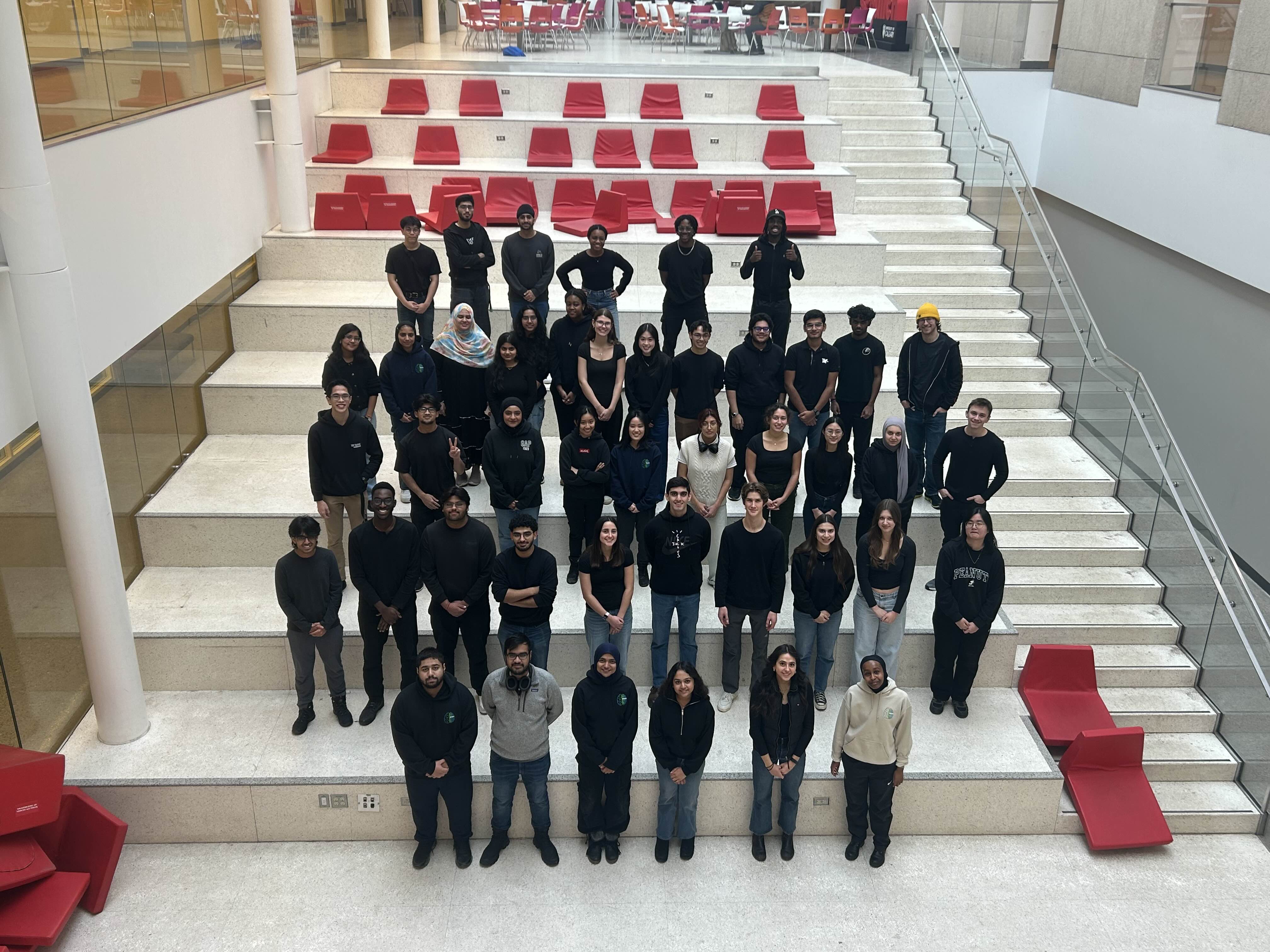What it does
Connected is a TV remote for individuals with dementia. Caregivers can set channel lists and volume limits via a web app. It features an ergonomic design, large labels, and a built-in “Find My Remote” function.
Your inspiration
Dementia affects many Canadians, disrupting daily life through declining cognitive abilities like thinking, memory, and reasoning. This remote offers a simple alternative to the complex technology often needed to operate a TV. Standard remotes have numerous small buttons and complicated setups. Other simplified options may lack key features like waterproofing, location tracking, or affordability, sometimes with even more confusing setups. This solution delivers an ergonomic, intuitive, and user-friendly remote with customizable options and a simplified setup, developed on a modest budget and shaped by caregiver and service provider feedback.
How it works
The Connected TV remote integrates three core elements: a custom PCB, an interactive web app, and an ergonomic casing. The custom PCB, built around the simple and programmable ESP32 microcontroller, was prototyped and refined iteratively. It includes five LED buttons that can light up and a buzzer for the Find-My-Remote feature. The interactive web app enables core functionality. Users pair the device via Bluetooth, assign a custom name (useful for managing multiple remotes), and complete setup with animated feedback. The remote supports universal control with a learning mode to copy signals from standard remotes. Volume limits can be set through the interface, and the buzzer can be triggered via Bluetooth to locate a misplaced remote (Find-My-Remote feature). The casing was iteratively designed for comfort, grip, and waterproofing. High-contrast labels and tactile buttons improve usability for users with cognitive impairments.
Design process
The “Connected” remote began in 2023 to simplify TV remotes for people with dementia. Inspired by feedback from families, caregivers, Shaw, and products like the Flipper Remote, the goal was to create a simple, universal, customizable, and durable solution. The idea came from a professor whose mother-in-law had dementia; her input shaped the first prototype. The initial version used an Arduino Uno, an IR receiver/LED, and breadboard buttons for basic control. An early Angular interface let caregivers set volume and channel limits, proving the concept. By late 2023, we moved to a custom PCB with the ATmega328P, designed in Altium, and paired with a React app. This enabled remote setup of features like favorite channels and volume caps. The third prototype reused the codebase, ported to the compact, capable ESP32, still used today. We showcased the prototype at the Schulich and Western Engineering Competitions, winning first place at both. In 2024, we added Bluetooth Low Energy (BLE) for caregiver access, a buzzer for “Find My Remote,” and redesigned the casing for comfort and safety, leveraging the ESP32’s wireless features. By early 2025, the second-gen remote featured BLE, a React UI, mobile support, a buzzer, and a waterproof, ergonomic casing, ready for real-world use.
How it is different
Connected replaces long, confusing manuals with an intuitive web app for setup. Each button can be tested in real time, reducing frustration and boosting confidence. Unlike competitor remotes that reveal errors only at the end, often requiring full reconfiguration, our process is clear and error-resistant. The app also supports dynamic updates via the LED buttons based on user feedback, eliminating the need for reprints. The remote fills a key market gap with a built-in “Find My Remote” feature, added after consultation with a dementia care expert, a key characteristic most simplified remotes on the market lack. The remote also features large, clear labels to help reduce confusion, while the waterproof casing ensures easy cleaning and suitability for environments requiring regular sanitization, all while remaining budget-friendly.
Future plans
We’re focused on five key development areas. First, refining hardware and software; improving mechanical design, adding silicone buttons, enhancing the mobile UI, and expanding customization. Second, conducting more enhanced user testing with dementia patients, caregivers, and elder care centers. Third, iterating based on real-world feedback, including potential changes to layout, materials, or accessibility. Fourth, building partnerships, including a pilot with the Brenda Strafford Foundation. Finally, advancing commercialization through a scalable, impact-driven go-to-market plan.
Awards
The Connected Remote has won several awards, including first place at the Schulich Engineering Competition (Local) and the Western Engineering Competition (Regional). We have also been nominated for the Canadian Engineering Competition (Nationals).



Connect